Erratum
Research Article
Issue Reviewers
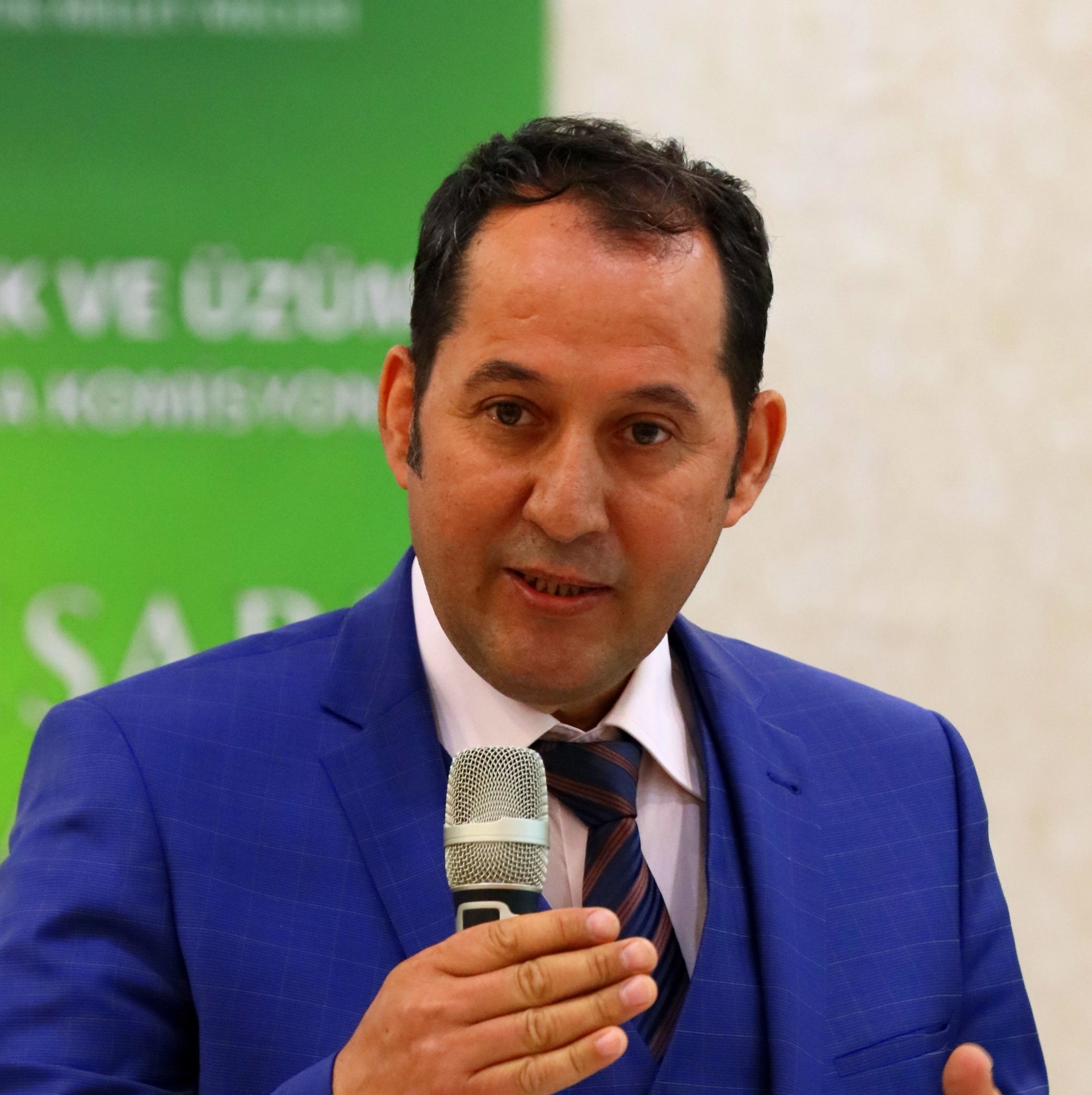


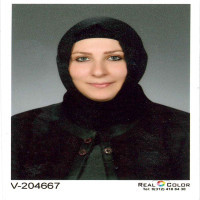







Born in 1974 in Köyceğiz district of Muğla province, Prof. Dr. Ercan CEYHAN graduated from Selçuk University, Faculty of Agriculture, Department of Field Crops as an Agricultural Engineer in 1996. In 1996, he started to work as a research assistant at Selçuk University Faculty of Agriculture, completed his master's degree in 1999 and his doctorate in 2004. In 2005, he was appointed Assistant Professor, in 2010 as Associate Professor, and in 2016 as Professor. Between 2016 and 2022, he served as the Head of the Field Crops Department at Selçuk University, Faculty of Agriculture. He established Turkey's first fully controlled Plant Breeding Greenhouses, Seed Quality and Certification Laboratory, and a Plant Test Room with project support from organizations such as TÜBİTAK, TAGEM, and KOP. In 2017, he established the Department of Plant Breeding and Genetics and the Plant Breeding and Seed Technologies Application and Research Center at Selçuk University, the first in Turkey, and he is still the Director of the Center. He mainly works on plant breeding and has 12 registered varieties. Prof. Dr. Ercan CEYHAN, who is married and has one child, still works as a faculty member in the same place.


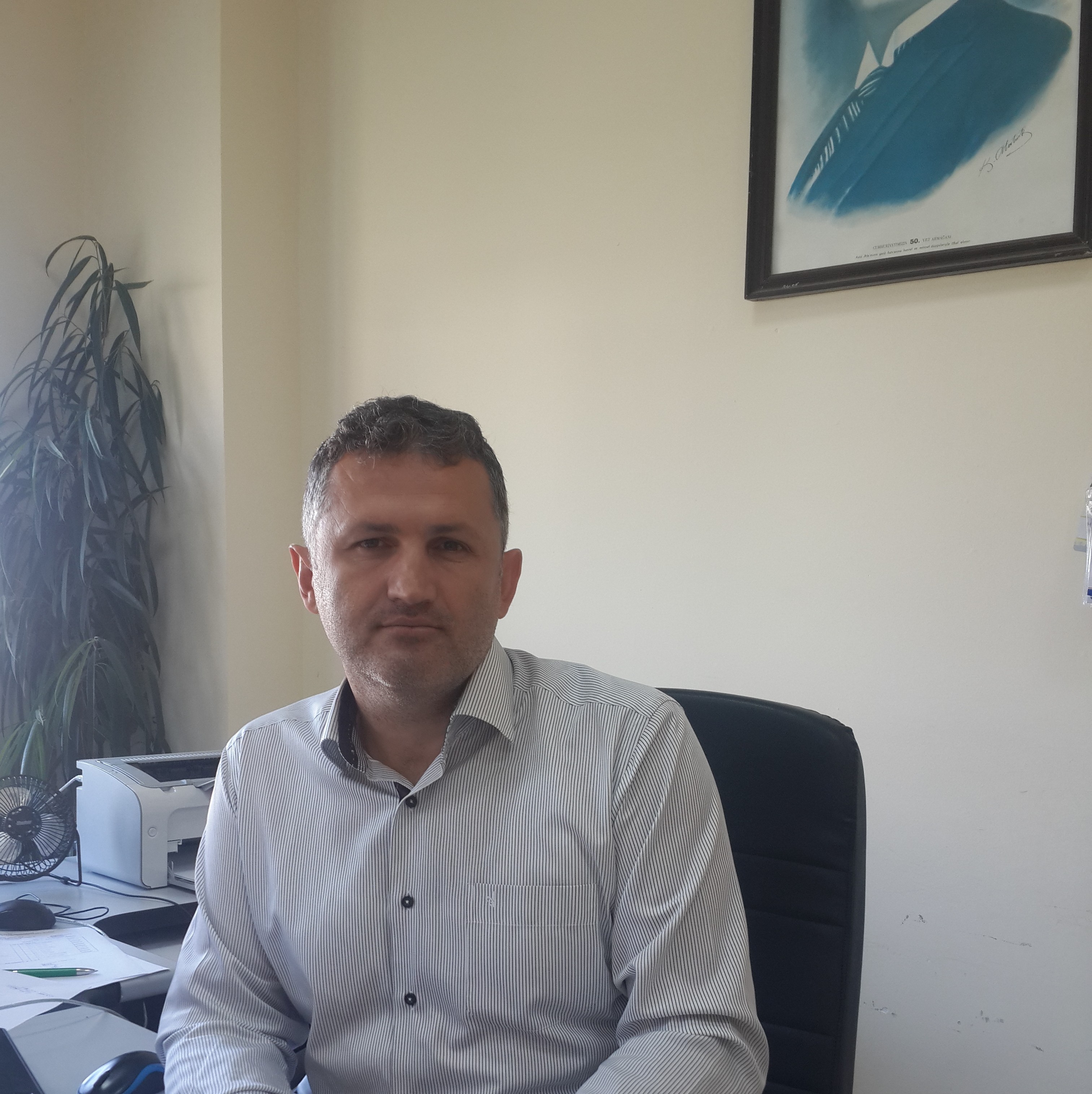


Born in 1965 in the Güneysu district of Rize province, Hüseyin ÇELİK graduated from the Department of Horticulture at the Faculty of Agriculture of Ondokuz Mayıs University with honors in 1988. He completed his master's degree in Viticultural Science in 1990. He became a Doctor of Science in the Department of Viticulture and Breeding in 1995, Assistant Professor in the same field in 1996, Associate Professor in 2003, and Professor in 2009.
In general, he studies grapevine propagation, hybridization, and selection breeding in developing new varieties, disease resistance, and quality and quantity of grapes. With his breeding studies on foxy grapes (Vitis labrusca L) specific to the Black Sea Region, he registered 5 foxy grape varieties ('Ulkemiz', 'Rizessi', Rizellim, 'Çeliksu' and 'Rizpem') for the first time in Turkiye and introduced them to the country's viticulture.
He is the namesake of the new berry fruits that are not cultivated in Turkiye, unknown or left in nature, such as Turkish new berry fruits named as Maviyemis, Turnayemisi, Kekreyemis, Guzyemisi, Çayuzumu and Çobanuzumu’s Fruit, and he is an academician who enabled the inclusion of these fruit species in Turkish agriculture. In addition to blueberry, cranberry, lingonberry, autumn olive berry, Caucasian whortleberry, and bilberry species, which are used as functional foods, he also studies aronia, golden berry (physalis, tomatillo), goji berry, honeyberry, currants, blackberry, raspberry and other unknown berry fruits. .
He introduced the maviyemis (named in Turkish) fruit, which had no plants and/or fruits in Turkiye until the 2000s and became famous in the world as BLUEBERRY, to Turkey for the first time, and he carried out studies on the adaptation, propagation, yield-quality, growth and development of blueberry varieties in many different regions of Turkiye. He started blueberry arboriculture in Turkey by registering the blueberry varieties breed in foreign countries, and he took part in the establishment of thousands of decares of blueberry gardens in soil or soilless culture and pots in almost every region of Turkiye or provided technical-academic support-consultancy to the establishment of hectares of blueberry gardens. It pioneered the processing of blueberry fruit in the jam, cake, fruit juice, ice cream and fruit cake industry, making it a sector in Turkiye.
He has 256 scientific publications, including 19 books on viticulture cultivation and breeding and popular berry fruits like blueberry, cranberry, lingonberry, goji berry, Aronia berry, autumn olive berry, wild Vacciniums etc..
He has carried out dozens of projects with the support of consultancy of TÜBİTAK, SPO, EU, Bilateral Cooperation, University Scientific Research (BAP), Social Risk Reduction (SRAP), University-Industry cooperation and R&D, Development Agencies, Non-Governmental Organizations (Foundations) and Chambers and Private Sector R&D projects or participated in these projects as a researcher on Viticulture and functional and new berry fruits,
He has provided and continues to provide technical, administrative, scientific and technological consultancy to more than 20 commercial companies on grape cultivation (viticulture) and Turkey's new grapefruits, including blueberry. He has taken part in many social responsibility projects such as "From Seed to Tree", "My Fruit - My Tree, My Garden", "My Most Beautiful Balcony", "Agriculture on the Balcony", "I'm Establishing My Hobby Garden"...
Deputy Dean, Deputy Director of the Institute of Science and Technology, Department Head, Deputy Head of the Department, Head of the Department of Horticulture, Head of the Department of Viticulture and Breeding, Vice President of the Samsun Rizeliler Aid and Solidarity Association and Member of the Founders' Board, Consultant of the Environment and Computer-Technology Club. , Student consultancy, Assistant Professor, Associate Professor and Professor Representatives, Faculty Board, Institute Board Membership, Quality Board Presidency, Scientific journal editor-in-chief and editorial board membership, Forestry and Environmental Regulation Board Membership and Scientific Projects Evaluation Commission (BAP) membership. and served as a non-academic member and jury member.
He has disseminated the information he produced to farmers all over Turkiye by participating in dozens of news, TV and Radio programs in many written, visual and audio media organs. He has prepared and distributed thousands of brochures, posters, CDs and videos on social media (https://www.youtube.com/@blueberryTR/videos) for the promotion of new fruit species, especially blueberry. He has carried out scientific and technical-technological innovation studies in short and/or medium-long periods in many foreign countries such as America, Germany, Netherlands, Poland, Azerbaijan, Bulgaria, Czech Republic, Republic of Bosnia and Herzegovina and Georgia, and has participated in many international symposiums and congresses. Hundreds of seminars, panels, symposiums, congresses, scientific project evaluations, appointments-academic promotions, etc. took part in injuries.
He has the Scientist award, publication incentive awards, and outstanding achievement awards from the Land and Air Force Commands during his reserve officer period.
Viticulture, Horticulture, Berry Fruits, Propagation, Cutivar testing, adaptation, Vitis labrusca, Cultivar development, Vitis vinifera, Blueberry, Cranberry, Autumn olive berry, Aronia, propagation,
USEFUL LINKS
https://www.youtube.com/@blueberryTR/videos
https://www.instagram.com/profhuseyincelik?igsh=NXczbjM3Y3VndjRr&utm_source=qr
https://www.facebook.com/profhuseyincelik?mibextid=PtKPJ9
https://www.researchgate.net/profile/Huseyin-Celik
https://personel.omu.edu.tr/tr/huscelik
https://akademik.yok.gov.tr/AkademikArama/view/viewAuthor.jsp

I am Jemmy J. S. Dethan. I took undergraduate-level (S1) courses in agricultural mechanisation, postgraduate studies in agricultural engineering, and doctoral-level studies in biomass energy in applications for the field of animal husbandry.
Several research works have been published, including (https://orcid.org/my-orcid?orcid=0000-0002-6815-7341) :
1. Optimization of Particle Size of Torrefied Kesambi Leaf and Binder Ratio on the Quality of Biobriquettes
2. Predicting a Higher Heating Value for Torrefied Kesambi Leaf Biobriquettes through Ultimate Analysis
3. Characteristics of Residence Time of the Torrefaction Process on the Result of Pruning Kesambi Waste
4. Characteristics of kesambi leaf torrefaction biomass
5 Automated Drying of Moringa Leaves Using an Arduino Uno Microcontroller

PROF. DR. MEHMET SİNCİK’İN ÖZGEÇMİŞİ
1972 yılında Bursa’da doğdu. İlk, orta ve lise öğrenimini Bursa’da tamamladıktan sonra, 1990 yılında Bursa Uludağ Üniversitesi Ziraat Fakültesi Tarla Bitkileri Bölümü’nü kazandı. 1995 yılında lisans öğrenimini tamamlayarak, Bursa Uludağ Üniversitesi Fen Bilimleri Enstitüsü Tarla Bitkileri Anabilim Dalı’nda yüksek lisans eğitimine başladı. 1996 yılında aynı Anabilim Dalı’na araştırma görevlisi olarak atandı. 1998 yılında yüksek lisansını tamamladı ve aynı yıl, Bursa Uludağ Üniversitesi Fen Bilimleri Enstitüsü Tarla Bitkileri Anabilim Dalı’nda doktora eğitimine başladı. 2004 yılında doktora eğitimini tamamlayan araştırıcı; 2010 yılında Doçent ve 2015 yılında Profesör unvanlarını almıştır. Halen Bursa Uludağ Üniversitesi Ziraat Fakültesi Tarla Bitkileri Bölümü’nde öğretim üyesi olarak görev yapmaktadır. Evli ve üç çocuk babasıdır.



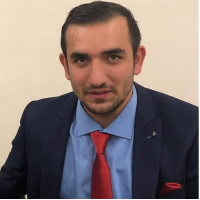
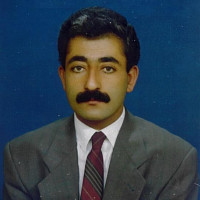


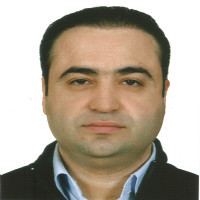
1997 yılında kazandığım Ege Üniversitesi Ziraat Fakültesi Bölümünden, ilk yıl İngilizce hazırlık sınıfı olmak üzere 2002 yılında mezun oldum. Öğrenciliğim sürecinde, 3. sınıftan itibaren Philip Morris Sabancı bursunu aldım, ayrıca Ege Üniversitesinin Uluslararası Teknik Stajyer Öğrenci Mübadelesi Birliği (International Association for the Exchange of the Students for Technical Experience=IAESTE) işbirliği çerçevesinde Alman Akademik Değişim Servisi (DAAD) tarafından verilen bursu kazanarak, Institut für Phytopathologie und Angewandte Zoologie (IPAZ) Almanya'da Ağustos-Ekim 2001 tarihlerinde stajımı tamamladım. Lisans mezuniyetimle birlikte E.Ü. FBE Bitki Koruma ABD.'nda yükseklisansa başladım. Yine bu süreçte de PhilipMorris SABANCI yüksek lisans bursunu almaya hak kazandım. Yüksek lisansımı bitirmek üzereyken Selçuk Üniversitesi FBE Bitki Koruma Bölümünde açılan Araştırma Görevliliği kadrosuna başvurdum ve 2005 yılından beridir S.Ü. Ziraat Fakültesinde çalışmaktayım...
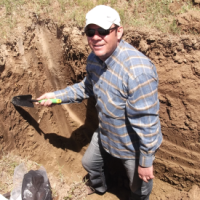

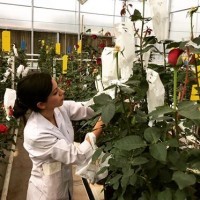

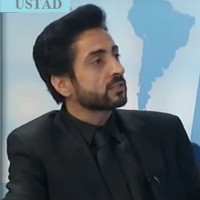

Aim & Scope
The aim of the Journal of Agricultural Faculty of Gaziosmanpasa University is to publish high quality original scientific articles on current issues, to share information between scientists and researchers, and to provide free access to information resources for everyone with an open access policy.
Author Guidelines
ARTICLE PREPARATION
1. The Journal of Gaziosmanpaşa University Faculty of Agriculture is published three issues in a year as in April, August and December.
2. The journal publishes original research articles in the field of Agricultural Sciences that have not been published previously and including original research articles published as an abstract in proceeding books.
3. If the authors are the same in the manuscripts, only two of them are accepted for the publication in the same issue.
4. There is no royalty payment to the authors. Also there is no publication fee for the accepted manuscript.
5. Authors are responsible for the scientific content of the manuscripts to be published.
6. The research articles should be prepared in English under the main headings; Title, Abstract, Öz, Keywords in Turkish and in English, Introduction, Material and Methods, Findings and Discussion, Results and References.
7. Article layout;
a. It should be written in A4 size, 12 point Times New Roman type letters and 1.5 line spacing. Page margins should be 3 cm each.
b. Each page and line of the article should be numbered. The article should not exceed 15 pages in total.
c. The Turkish and English title of the article should be written size 14 point, bold, centered and only the first letter of each words should be a capital and the rest in lower case letters.
d. A maximum two levels of headings are recommended. First-level heading should be indented 0.5 cm, justified, bold, and the first letter of each word should be capitalized. Second level heading should be bold, indented 0.5 cm, justified, and only the first letter of the first word should be capitalized.
e. The main body of the text should be indented 0.5 cm. All paragraphs should start from the left margin. The text should be completely justified. There should be no spelling. Highlighting text with the use of bold or underlined is not recommended.
f. The name(s) of the author should be written clearly (academic title should not be specified), the address information of all authors, their ORCID IDs and the contact information of correspondence author should be given (e-mail, telephone, fax, etc.). Addresses should be written clearly just below the authors' names with the first letter of the words capitalized.
Title: The title of the article should be short and descriptive and should not exceed 15 words.
Abstract: Both Turkish and English abstracts should not exceed 200 words, should be written in 12 points and 1.5 spacing, should include the purpose of the article, important data and results of the study. Only english abstract can be written for articles coming from abroad.
Keywords: Should not exceed 5 words in alphabetical order.
Introduction: This section should clearly express the problem in the study, explain previous and especially recent work, and clearly state the aims of the study.
Materials and Methods: This section should contain all the materials used in the study, the methods should be explained in detail, and statistical methods should be explained.
Results and discussionFindings and discussion obtained in the study should be given as tables and information, and should be interpreted and discussed according to the results of the previous studies.
Conclusion: The contribution of the findings to science and practice should be emphasized together with the recommendations.
Acknowledgments: In this section, people, organizations and projects that contributed to the work can be included.
8. Scientific names of the species in the article should be in italics and decimal numbers should be separated by a point.
9. Graphics, maps, photographs, pictures and similar presentations should be named as "Figure" and the presentation of numerical values should be named as "Table". Turkish nomenclature (For Turkish authors) should be placed under the English nomenclature of Figures and Tables. All given tables and pictures should be cited in the text and should be given after the reference in the article close to the cited place.
In-text citations and References
It should be made according to the APA 7 spelling rule.
In-text citations
Author type Parenthetic Narrative
One-author study (Carducci, 2009) Carducci (2009)
Two-author study (Vollrath & Torgersen, 2002) Vollrath and Torgersen (2020)
Three or more -author study (Gunay-Oge et al., 2020) Gunay-Oge et al. (2020)
Group with abbreviation
The first cite (World Health Organisation [WHO], 2020) World Health Organisation (WHO, 2020)
Subsequent cites (WHO, 2020) WHO (2020)
Group without abbreviation Group name Group name
-If more than one reference is in parentheses, they should be given in alphabetical order and separated by semicolons.
(Afifi et al., 2011; Cohen et al., 2014; Lobbestael et al., 2010; Zhang et al., 2012).
-If more than one reference is cited narratively, the order is not important, it can be written as desired.
Zhang et al. (2012), Cohen et al. (2014) and Afifi et al. (2011) examined…..
-If the name of the application or program is given, it is sufficient to write it if the version used is known.
Data were analyzed with IBM SPSS Statistics (Version 25).
-If the same source is cited in more than one narrative form in a paragraph, the year is not written in the case of repetition.
However, the year is always indicated in the quotations in parentheses.
More detailed information about in-text citation can be found on the APA 7 official website.If the same source is cited in more than one narrative form in a paragraph, the year is not written in the case of repetition.
-However, the year is always indicated in the quotations in parentheses.
-More detailed information about in-text citation can be found on the APA 7 official website.
Resources
Articles
-If an article has a DOI, the DOI is added to the reference.
-The issue number of a journal is always appended.
Grady, J. S., Her, M., Moreno, G., Perez, C., & Yelinek, J. (2019). Emotions in storybooks: A comparison of storybooks that represent ethnic and racial groups in the United States. Psychology of Popular Media Culture, 8(3), 207–217. https://doi.org/10.1037/ppm0000185
-If the journal article has an article number instead of a page range, include the word “Article” and then
the article number instead of the page range
Jerrentrup, A., Mueller, T., Glowalla, U., Herder, M., Henrichs, N., Neubauer, A., & Schaefer, J. R. (2018). Teaching medicine with the help of “Dr. House.” PLoS ONE, 13(3), Article e0193972. https://doi.org/10.1371/journal.pone.0193972
-If the article has missing information
Missing volume number
Stegmeir, M. (2016). Climate change: New discipline practices promote college access. The Journal of College Admission, (231), 44–47. https://www.nxtbook.com/ygsreprints/NACAC/nacac_jca_spring2016/#/46
Missing issue number
Sanchiz, M., Chevalier, A., & Amadieu, F. (2017). How do older and young adults start searching for information? Impact of age, domain knowledge and problem complexity on the different steps of information searching. Computers in Human Behavior, 72, 67–78. https://doi.org/10.1016/j.chb.2017.02.038
Missing page or article number
Butler, J. (2017). Where access meets multimodality: The case of ASL music videos. Kairos: Journal of Rhetoric, Technology, and Pedagogy, 21(1). http://technorhetoric.net/21.1/topoi/butler/index.html
-If the journal does not use volume, issue, and/or article or page numbers, omit the missing element(s)from the reference
Book/E-Book References
Jackson, L. M. (2019). The psychology of prejudice: From attitudes to social action (2nd ed.). American Psychological Association. https://doi.org/10.1037/0000168-000
Sapolsky, R. M. (2017). Behave: The biology of humans at our best and worst. Penguin Books.
Svendsen, S., & Løber, L. (2020). The big picture/Academic writing: The one-hour guide (3rd digital ed.). Hans Reitzel Forlag. https://thebigpicture-academicwriting.digi.hansreitzel.dk/
-Provide the author, year of publication, title, and publisher of the book. Include any edition information in parentheses after the title, without italics
-If the book includes a DOI, include the DOI in the reference after the publisher name.
-Do not include the publisher location.
-If the ebook without a DOI has a stable URL that will resolve for readers, include the URL of the book in
the reference. Do not include the name of the database in the reference.
-If the ebook is from an academic research database and has no DOI or stable URL, end the book reference after the publisher name.
Report by a Government Agency
National Cancer Institute. (2019). Taking time: Support for people with cancer (NIH Publication No. 18-2059). U.S. Department of Health and Human Services, National Institutes of Health. https://www.cancer.gov/publications/patient-education/takingtime.pdf
-The specific agency responsible for the report appears as the author. The names of parent agencies not present in the group author name appear in the source element as the publisher.
Conference Proceedings
Conference proceedings published in a journal
Duckworth, A. L., Quirk, A., Gallop, R., Hoyle, R. H., Kelly, D. R., & Matthews, M. D. (2019). Cognitive and noncognitive predictors of success. Proceedings of the National Academy of Sciences, USA, 116(47), 23499–23504. https://doi.org/10.1073/pnas.1910510116
-Conference proceedings published in a journal follow the same format as journal articles.
Conference proceedings published as a whole book
Kushilevitz, E., & Malkin, T. (Eds.). (2016). Lecture notes in computer science: Vol. 9562. Theory of cryptography. Springer. https://doi.org/10.1007/978-3-662-49096-9
-Conference proceedings published as a whole book follow the same reference format as whole edited books.
Thesis
Published theses.
Kabir, J. M. (2016). Factors influencing customer satisfaction at a fast food hamburger chain: The relationship between customer satisfaction and customer loyalty (Publication No. 10169573) [Doctoral dissertation, Wilmington University]. ProQuest Dissertations & Theses Global.
Miranda, C. (2019). Exploring the lived experiences of foster youth who obtained graduate level degrees: Self-efficacy, resilience, and the impact on identity development (Publication No. 27542827) [Doctoral dissertation, Pepperdine University]. PQDT Open. https://pqdtopen.proquest.com/doc/2309521814.html?FMT=AI
Zambrano-Vazquez, L. (2016). The interaction of state and trait worry on response monitoring in those with worry and obsessive-compulsive symptoms [Doctoral dissertation, University of Arizona]. UA Campus Repository. https://repository.arizona.edu/handle/10150/620615
-A thesis is considered published when it is available from a database an institutional repository, or an archive. If the database assigns publication numbers to theses, include the publication number in parentheses after the title of the dissertation or thesis without italics.
-Include the description “Doctoral” or “Master’s thesis” followed by a comma and the name of the institution that awarded the degree. --Place this information in square brackets after the thesis title and any publication number.
In the source element of the reference, provide the name of the database, repository, or archive.
-Include a URL for the dissertation or thesis if the URL will resolve for readers.
-If the database or archive requires users to log in before they can view the dissertation or thesis, meaning the URL will not work for readers, end the reference with the database name.
Unpublished Thesis
Harris, L. (2014). Instructional leadership perceptions and practices of elementary school leaders [Unpublished doctoral dissertation]. University of Virginia.
-When a thesis is unpublished, include the description “[Unpublished doctoral dissertation]” or “[Unpublished master’s thesis]” in square brackets after the dissertation or thesis title.
-In the source element of the reference, provide the name of the institution that awarded the degree..
You can find detailed information about other references types on the APA 7 official website.
Ethical Principles and Publication Policy
ETHICAL PRINCIPLES AND PUBLICATION POLICY
Journal of Agricultural Faculty of Gaziosmanpasa University is committed to academic principles and ethical values in its editorial policy. It continues its publication life in accordance with national and international standards regarding ethical principles and values. In this context, the standards set by COPE (Committee on Publication Ethics) and the principles set in the Council of Higher Education "Scientific Research and Publication Ethics Directive" are taken into account (https://publicationethics.org/, https://www.yok.gov.tr/Sayfalar/Kurumsal/mevzuat/bilimsel-arastirma-ve-…). The publication request of the works that are found to be in violation of the research and publication ethics standards accepted in the article evaluation process is rejected. If the said contradiction is detected after the publication of the work, the work is removed from the publication.
Author’s responsibilities:
The references list should be complete;
No plagiarism, no fraudulent data is allowed;
It is forbidden to publish same research in more than one journal;
Authors obliged to participate in peer review process;
All authors have significantly contributed to the research;
Statement that all data in article are real and authentic;
All authors are obliged to provide retractions or corrections of mistakes,
Authors should ensure that any studies involving human or animal subjects conform to national, local and institutional laws and requirements.
The actions against science research and publication ethics include;
Plagiarism: Presenting others' ideas, methods, data, applications, writings, figures or works as if they were their own works, partly or completely, without referring to the scientific rules.
Fraud: to produce data that is not based on research, to organize or modify the work submitted or published on the basis of unreal data, to report or to publish them, to make a research that has not been done.
Distorting: Dealing with the records of research and the data obtained, showing the unused methods, devices and materials used in the research, playing with data and / or results to fit the relevant theory or assumptions, or falsifying or shaping the results of the research in the interests of the people and organizations supported.
Slicing: Presenting the results of a research as separate works by disrupting the uniqueness of the research, by dissecting it inappropriately and making a large number of publications without reference to each other.
Unfair writ•er: To include people who do not have active contribution among the authors, not to include the people who have active contribution among the writers, to change the ranking of the authors without any justification and in an inappropriate way, to remove the names of those who have active contributions from the work during publication or in later editions, and to use their influence even if there is no active contribution.
Other types of ethical violations: Not expressing the contributions of the persons, institutions or organizations that support them in the research, and their contributions in the research, Not to obey the ethical rules in human and animal research, to respect the rights of patients in their publications, To share the information contained in a work that he is commissioned to examine as an arbitrator with others, To use the sources, facilities and devices provided for scientific research out of their use purposes. To blame for a completely irrelevant, unwarranted and intentional violation of ethics (YÖK Scientific Research and Publication Ethics Directive, Article 8).
Peer review/responsibility for the reviewers:
To contribute to the decision-making process, and to assist in improving the quality of the published paper by reviewing the manuscript objectively.
Reviewers should have no conflict of interest with respect to the research, the authors and/or the research funders;
Judgments should be objective;
Reviewed articles should be treated confidentially.
Editorial responsibilities:
Editors have complete responsibility and authority to reject/accept an article;
Editors should have no conflict of interest with respect to articles they reject/accept;
Only accept a paper when reasonably certain;
Preserve anonymity of reviewers.
No plagiarism, no fraudulent data.
When errors are found, promote publication of correction or retraction;
To act in a balanced, objective and fair way while carrying out their expected duties, without discrimination on grounds of gender, sexual orientation, religious or political beliefs, ethnic or geographical origin of the authors.
Duties of the Publisher
Monitoring/safeguarding publishing ethics by editorial board;
Guidelines for retracting articles;
Maintain the integrity of the academic record;
Preclude business needs from compromising intellectual and ethical standards;
Always be willing to publish corrections, clarifications, retractions, and apologies when needed.
In an article published in the journal, the reader can send an e-mail to ziraatdergi@gop.edu.tr when he has any warnings about important scientific error or plagiarism, recurring articles. With the awareness that the journal will be an opportunity for the scientific and technical development of the journal, your warnings / criticisms are welcomed by the editorial board and our improvements are made quickly and constructively.
Evaluation Process
The submitted manuscript for publication is taken into consideration by the editor in accordance with the principles of publication. In case of finding not qualified to publish it in the journal, the editor has the right to make a decision to return the articles to the author / authors without sending to the referees. Papers should be written with fluent English without any grammatical and typographical errors. Manuscripts with any of those errors will be rejected and sent to the authors for corrections before submission and review. The journal uses double-blind system for peer-review; both reviewers and authors’ identities remain anonymous. The paper will be peer-reviewed at least by two reviewers and one editor from the journal. The authors should upload the corrected manuscript with correction form and answers to the reviewers’ comments immediately after receiving the comments. After the author has made the final check of the article, he sends it to the ziraatdergi@gop.edu.tr e-mail address with the copyright transfer agreement signed by the author or authors.
The Editor is the ultimate decision-maker for the publication of the manuscript, taking into account the referee reports and / or the adequacy of the requested corrections. Before the publication of the manuscript, the manuscript is edited and sent to the author for the final check. Print errors as a result of incorrect control are the responsibility of the authors. The completed works are published within the article limits that should be in the issue of the journal, considering the date of acceptance
Plagiarism Percentage
Articles submitted to the journal are reviewed in the plagiarism program (iThenticate Plagiarism Detection Software) (http://www.ithenticate.com) before being submitted to the evaluation process. As a result of the screening, except the references section, articles with similarity rate of 20% and lower are accepted for application. After the article is uploaded to the system, it is necessary to send the iThenticate report to the e-mail address ziraatdergi@gop.edu.tr .
Ethics Committee Approval
Authors should indicate the name of institute approves the necessary ethical commission report and the serial number of the approval in the Material and Methods section. If necessary, editorial board may also request the official document of the ethical commission report. Whether the article requires approval from the ethical committee should be questioned by the authors and editors from the section below.
Researches requiring the Ethics Committee's permission are as follows
Any research carried out with qualitative or quantitative approaches that require data collection from participants using survey, interview, focus group work, observation, experiment, interview techniques.
Use of humans and animals (including material / data) for experimental or other scientific purposes,
Clinical researches on humans
Researches on animals,
Retrospective studies in accordance with the law of protection of personal data,
Also;
In the case reports, it is stated that the “informed consent form” was taken
Obtaining and specifying the permission of the owners for the use of scales, surveys and photographs belonging to others,
Stating that the copyright regulations are complied with for the ideas and works of art used.
Price Policy
No royalties are paid to authors.
No printing fee is charged for manuscripts accepted for publication.





